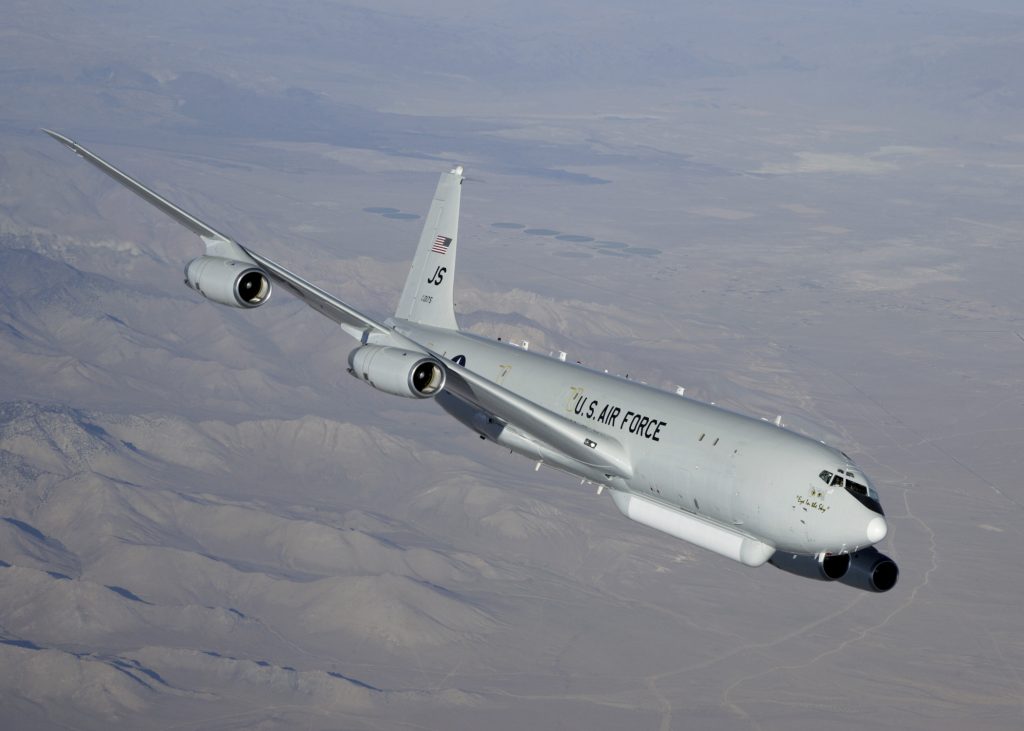
E-8C JSTARS Joint Surveillance Target Attack Radar System
WASHINGTON: Like the fabled boy who cried “wolf,” the Air Force has changed its mind so many times on whether it has needed to retire various aircraft that people may not believe it anymore.

Sen. Jack Reed
In a hearing this morning, the top Democrat on the Senate Armed Services Committee, Jack Reed, said he’s skeptical about the current plan to retire the JSTARS radar surveillance plane because the Air Force has been inconsistent, not just about JSTARS, but a host of other programs.
The Air Force’s latest JSTARS plan “deserves our careful consideration,” Reed said, “but we must consider it against the recent history of abrupt Air Force program changes.” In recent years, the Air Force
- tried to retire the beloved A-10 Thunderbolt, arguing it is too vulnerable for future wars. After heavy congressional pressure, the Air Force said it would not only retain the A-10, but also buy a new Light Attack Aircraft that would be even more vulnerable.
- officially certified the MQ-4 Global Hawk surveillance drone as “critical,” then proposed cancelling it months later to free up money for the manned U-2, then proposed cancelling the U-2 to free up funds for Global Hawk.
- proposed retiring half the EC-130 Compass Call electronic warfare aircraft without replacing them, then decided modernizing them was so important it was worth issuing a sole-source contract — something Congress hates.
- bought twin-engine C-27 Spartan cargo planes for missions where the standard C-130 Hercules would be too big, then cancelled the C-27 and gave its missions to… the C-130.
- proposed retiring much of the JSTARS fleet without replacement, then held a competition to replace them with a new radar on a modified business jet, but now plans to cancel that competition and replace JSTARS with a widely dispersed array of sensors on various aircraft and satellites, rather than a single new aircraft.
The Air Force changed its plan on JSTARS for two reasons, the service’s top civilian replied. First, Secretary Heather Wilson told Reed, as the Pentagon worked on the 2019 budget and the new National Defense Strategy, with its emphasis on high-tech foes like Russia and China, it became increasingly clear that an unstealthy converted airliner like JSTARS would just get shot down in a major war. Second, as the Air Force studied JSTARS specifically, it became clear the aircraft were in better shape than expected and could serve a decade longer than originally planned.

Heather Wilson
Now, saying that JSTARS wouldn’t survive in a future war and that we should keep it around longer may seem like another contradiction. But Wilson and the Air Force Chief of Staff, Gen. David Goldfein, see the extra decade of JSTARS as a bridge, time to develop the decentralized network of hard-to-kill sensors that they see as essential for great power combat.
“The fundamental assumption that we were starting with was these airplanes were going to stop flying in 2018,” Gen. Goldfein told the senators. “When we did a deep dive into the fuselage, we learned that we can fly the current (air)frame through the mid to late 20s, 2028…. That gave us time to step back and say, is this the best plan?”
Besides keeping JSTARS longer, Goldfein said, the Air Force now wants to keep seven AWACS aircraft it had planned to retire and upgrade them to accept top secret intelligence feeds from a wide variety of sources. (While both have powerful radars, AWACS looks at the sky to track enemy and friendly aircraft, while JSTARS tracks enemy vehicles on the ground). And the service will take advantage of increasingly miniaturized electronics to put one of JSTARS’s key capabilities, the ability to track moving targets on the ground (aka GMTI), on the MQ-9 Reaper drone.

Gen. David Goldfein
Ultimately, Goldfein said, any Air Force aircraft — manned or unmanned — with an electronically scanned array radar can contribute to the ground surveillance mission that was once JSTARS’s alone. And a distributed surveillance system that relies pulling data from many aircraft of different types and sizes, plus satellites, will survive better in the face of enemy anti-aircraft fire than a single large, slow, unstealthy aircraft.
The Air Force must stand ready for both low-intensity combat against adversaries who can’t shoot back, like terrorists, and for high-intensity combat against the latest Russian or Chinese anti-access/area denial (A2/AD) defenses, Goldfein said. A decentralized system drawing on both air and space, what he called “multi-domain sensing,” is the best way to “provide that ground moving target and the battle management for both Yemen and Kaliningrad.”
In a ‘world first,’ DARPA project demonstrates AI dogfighting in real jet
“The potential for machine learning in aviation, whether military or civil, is enormous,” said Air Force Col. James Valpiani. “And these fundamental questions of how do we do it, how do we do it safely, how do we train them, are the questions that we are trying to get after.”


























